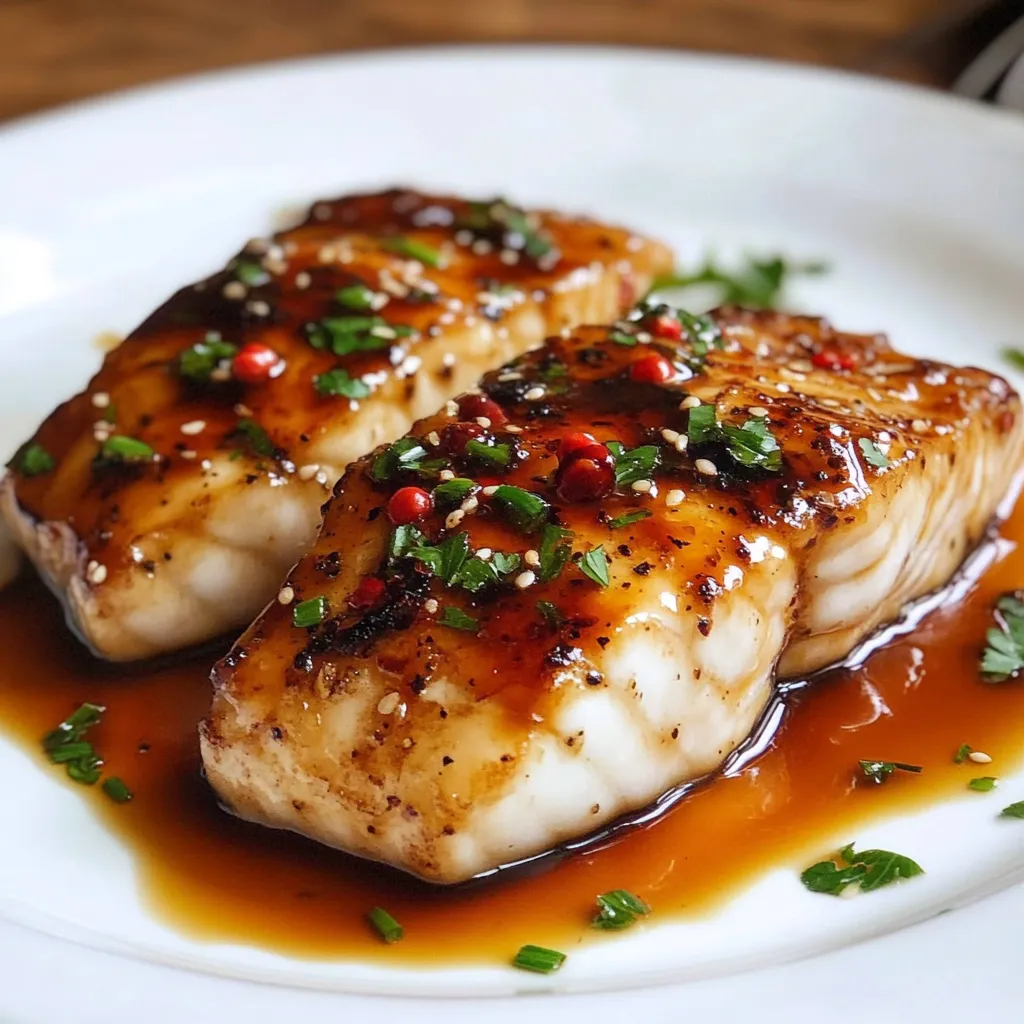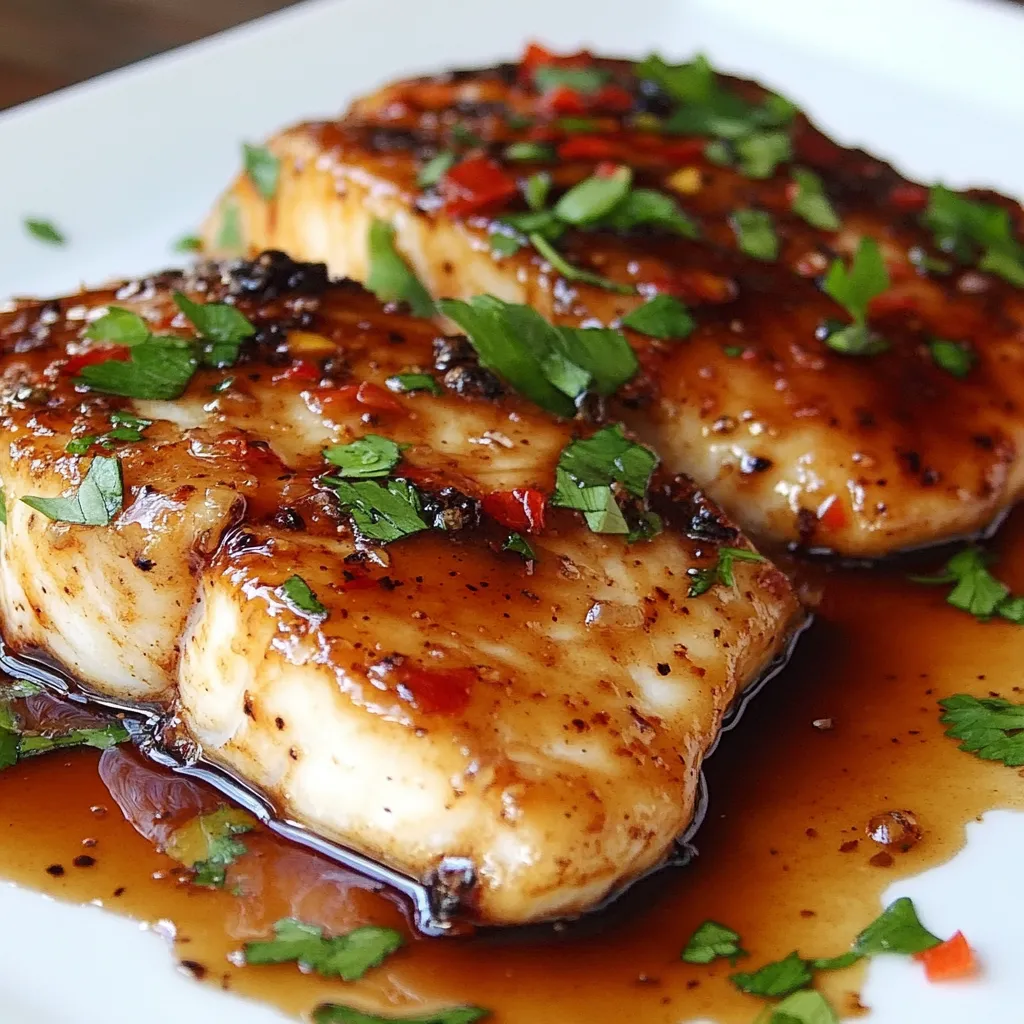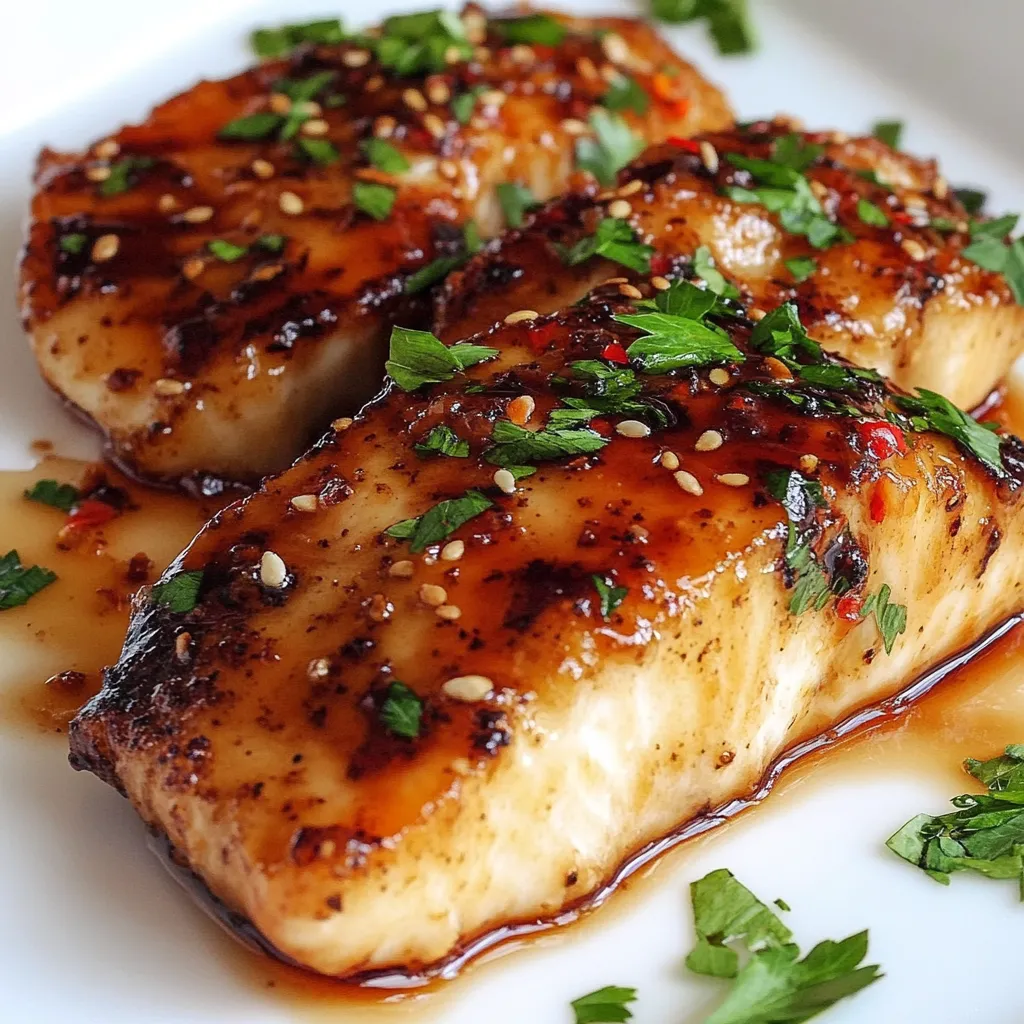 Pin it
Pin it
Tender, flaky rock cod drenched in a fragrant ginger-soy bath makes a fancy restaurant dish right at home. The light white meat works amazingly with the rich Asian-inspired sauce, giving you something that's both cozy and fancy. I've made this so many times in my kitchen and can tell you it's now our go-to family meal that never disappoints.
I stumbled on this dish one busy night when I had to use up some extra ginger. It turned out so amazing that I now make it regularly, especially when I want to wow dinner guests without spending forever cooking.
Key Ingredients Guide
- Rock Cod Fillets: Go for pieces that feel firm, look clear, and smell fresh like the ocean. They should bounce back when you press them lightly
- Fresh Ginger Root: Find pieces with unwrinkled skin that smell zippy when you scratch them. Younger ginger gives you the freshest kick
- Quality Soy Sauce: Pick traditionally brewed kinds for richer flavor and better depth
- Rice Vinegar: Get plain unseasoned vinegar so you can adjust the taste yourself
- Nearby Honey: Unprocessed honey tastes best and helps make a gorgeous glaze
Crafting Your Delicious Dish
- First Steps:
- Dry your fish completely with paper towels. Good prep makes sure it cooks evenly and soaks up more flavor.
- Sauce Creation:
- Throw ginger, soy sauce, and honey in a blender until smooth. It should smell amazing and balanced.
- Setting Up Fish:
- Cover fillets with the mixture, making sure they're coated everywhere. Let them sit at room temp to soak up flavors.
- Cooking Method:
- Get your pan hot, then cook the fish until it's golden and breaks apart easily. Look for that sweet caramelization.
Coming from a family near the sea, I learned to handle seafood with care. Ginger became my top trick for making basic fish dishes special, especially after watching my grandma cook with it. She always told me success comes from balancing ginger's kick with honey's sweetness.
Choosing Quality Fish
Getting to know your rock cod makes all the difference. This adaptable white fish, sometimes called Pacific snapper, has a clean, mild taste that works with lots of cooking styles. When buying, look for bright eyes on whole fish, or clear, firm meat for fillets. The flesh should bounce back when touched and shouldn't smell fishy at all.
 Pin it
Pin it
Building Fantastic Flavor
The secret to this dish is how the marinade comes together. Every ingredient has a job in making layers of taste that work with the gentle fish flavor. After trying this many times, I've found that letting the sauce ingredients sit together about 10 minutes before adding fish makes everything taste better together.
Great Side Dishes
Make this fish into a full meal with the right sides. Fluffy jasmine rice drinks up all that yummy sauce, while quickly cooked snow peas add nice crunch. I've learned that bringing a small dish of extra sauce to the table lets everyone add more if they want it.
Fun Recipe Changes
Try these tasty switches to match what you like or what you have on hand. Use tamari instead of soy sauce if you don't eat gluten, or add a bit of sesame oil for nutty flavor. My favorite change is mixing in some finely chopped lemongrass to the marinade for a bright citrus note that lifts the whole dish.
Storing Leftovers
Put any extra fish in a sealed container with parchment paper between layers so they don't stick together. The cooked fish stays good for about two days in the fridge. When you want to eat it again, wrap it in foil and warm it slowly in a cool oven to keep it moist.
After making this dish for years, I've grown to love how it combines basic ingredients into something really special. The trick is being careful with each part – from picking fresh fish to watching the cooking time closely. This dish shows that sometimes the easiest recipes give the most satisfying meals, especially when you focus on good ingredients and proper cooking.
Managing Heat Properly
Getting the temperature right is super important for perfect fish. Start with medium-high heat to get that nice golden outside, then turn it down to medium so the middle cooks without burning the outside. When you see the edges turning white, that's your sign to flip it over.
 Pin it
Pin it
Understanding Ginger
Knowing how ginger works in this dish opens up tons of flavor options. Young ginger has a lighter, flowery taste, while older ginger gives you deeper, spicier heat. I've noticed that when you grate ginger instead of chopping it, you get more oils out, making the marinade stronger.
Helpful Kitchen Tools
While you don't need fancy equipment for this dish, having the right tools makes cooking easier. A heavy pan spreads heat evenly, stopping hot spots that could cook some parts more than others. I still use my grandma's old cast iron pan because it gives me that perfect golden crust every time.
Frequently Asked Questions
- → What's the best marinating time for the cod?
- Let the cod sit in the marinade for 30 minutes to 1 hour. Don't go longer because the acid will start breaking down your fish too much.
- → Can I swap out the fish type?
- Sure, you can use other firm white fish instead of cod, like halibut or sea bass. Just watch your cooking time since thicker cuts need longer.
- → What goes well on the side?
- This fish tastes great with a side of steamed rice, some stir-fried veggies, or a crunchy Asian slaw to make it a full meal.
- → How can I tell when my fish is done?
- Your fish is ready when it turns white and flakes apart easily with a fork, usually about 3 minutes on each side when cooking in a pan.
- → Can I mix the marinade beforehand?
- Definitely, you can make the marinade up to a day ahead and keep it in the fridge in a sealed container until you're ready to use it.
